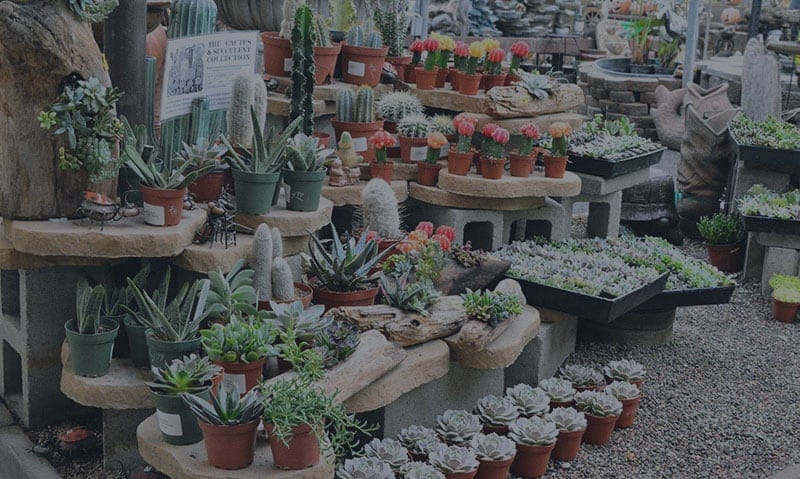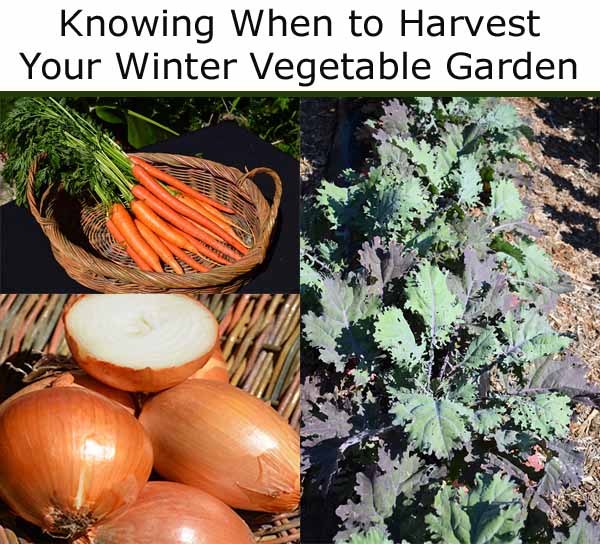Newsletter Articles
Knowing When to Harvest Your Winter Vegetable Garden
Written by Kelsey W.
If ever there was a better place to get acquainted with your New Year’s resolution of eating healthy, it’s your winter vegetable garden. Some of the happiest and most beautiful winter vegetables you can grow are the big leafy greens that always grace the top ten lists of “most healthy” foods out there.
But simply putting your spinach, chard, and kale into the ground some time in the fall isn’t enough to get your garden growing to its peak level. It’s essential to understand how long it takes your plants to mature, as well as when you can start harvesting those plants.
Even if you live in a pocket of Southern California where the temperatures dip low into near freezing territory, you can still get acquainted with several of these winter vegetables, but you may want to containerize them, just in case you need to move them inside for a few nights during a frost.
But without further ado, let’s talk about what plants you should be putting into the ground for your winter garden and how to know when it’s time to harvest all those healthy leafy greens and your cool weather plants like carrots, broccoli, and onions.
Planting from Seed Versus Using Seedlings
Planting from seed is certainly an adventure when you’re a first-time backyard gardener in Southern California in the fall and winter. You never know what the temperature is going to be, and the overall weather can get fairly unpredictable, especially as we march toward the new year.
Therefore, it’s often helpful to create a container garden if you’re keen on growing your garden from seeds rather than using seedlings from your Southern California garden center. If you plant seeds, you may need to wait anywhere from two to three months for your seeds to mature and get to the point where you can harvest.
For example, let’s say you want a big load of spinach for your homemade lasagna and ravioli. You’ll need to care for your seeds and eventual seedlings for about 50 days before you can start harvesting leaves. If we get some warmer temperatures, however, you can reduce that time to 40 to 45 days; it just depends on the weather.
On the other hand, if you choose to plant some seedlings that have already been sprouted, you can cut anywhere from one to two weeks off your harvest timeline. So, instead of waiting for 40 to 50 days, you can expect to harvest within a month of putting your little spinach friends into the ground.
When Should You Plant Your Winter Garden?
The timing for putting your plants into the ground usually depends on what you’re planting and when you want to use the plants for food. If you’re not keen on keeping a spreadsheet with a bunch of dates and numbers in it, that’s okay! It’s fine to use very general estimates.
Sometimes, it’s more about knowing the signs of when a plant is ready to harvest rather than getting the timing exactly right. The weather in Southern California is so incredibly accommodating that it’s not a deal breaker if you don’t get around to putting your carrots into the ground until December.
(in fact, carrots love the spring, too, so you might want to put them in the ground as one of your last gardening activities of the winter season)
In most cases, assuming you’re using little seedlings for your winter garden, you can expect to start harvesting after about 45 days of caring for your plants. Now, this number may go up or down depending on a few factors, like the weather, the type of plant, and the initial maturity of the seedlings.
If you get your seedlings into the ground in October and November, you should get to enjoy the new year with some harvests, whether you’re growing spinach and kale or onions and carrots. Mind you, the onions can take longer to grow, but they’re an incredibly satisfying plant to dig out of the ground once they’re mature!
When to Pluck Your Winter Carrots, Onions, and Beets from the Ground
Growing your winter below-ground vegetables takes a bit of a closer eye than the easy above-ground plants like spinach and broccoli, but don’t worry, you just need to look for specific signs to know when you harvest your grounded vegetables.
For your carrots, you’ll spend about two months caring for them before they’re ready for harvesting, and you’ll know they’re ready to pick when you see the tops of the carrot roots start to emerge from the soil.
If you don’t see the top of the carrot start to pop out of the ground after a few months, feel free to dig around and take a look at the carrot. Sometimes, they don’t pop out in an obvious way, and they’re already ready to go without letting you know!
For your winter onions, you’ll notice their leafy tops starting to fall over when they’re ready to harvest. The part of the leaves that meet up with the onion at ground level should feel dry and papery, and the leaves may also turn yellow.
If you’re going for expert level onion growing, you’re supposed to stop watering the onions anywhere from one to two weeks before harvesting, and you’re also supposed to dry your onions if they’re a pungent variety.
Honestly, you can take these steps if you want, but they won’t make or break your ability to grow onions. They’re pretty forgiving plants overall. The same is true for beets, especially in Southern California and when you’re not in danger of a frost. Beets are very forgiving and very easy to grow.
Beets take a few months to mature and become ready for harvesting, but a warm spell throughout December can definitely shorten your timeline. Just like your carrots, the beets will let you know they’re ready to come out of the ground by showing a little bit of themselves from the ground.
Harvesting Timelines on Leafy Greens Changes Depending on Your Personal Taste
So, the general rule of thumb for harvesting your winter leafy greens is that you should never take more than you need for a particular meal. If you’re cutting your kale plant for a salad, don’t take all the leaves you can just because they look “ripe.”
Instead, just choose some of the biggest leaves, always making sure to leave the terminal bud, so the plant continues to grow throughout the season. The terminal bud is right in the center of the plant at the top, and the plant will continue to produce leaves for quite a long time as long as you don’t take all the leaves at once or accidentally chop off the terminal bud.
If you’re absolutely keen on getting a sweeter taste, however, you’ll want to pluck a few smaller leaves. For leafy greens, smaller leaves – from kale plants especially – mean sweeter tastes.
Here are a few pieces of general wisdom you can apply to virtually any leafy green plant you want to harvest:
- Choose the biggest and oldest leaves for the first harvest.
- Harvest (older) leaves from near the bottom of the plant, not the (younger) leaves at the top
- Try to avoid harvesting more than a handful of leaves from any single plant.
- Remove dying leaves no matter their size
- Cover your plants if you’re in the hills and temperatures dip to freezing
- Try to eat your leafy greens within a week of harvesting
- Always fully wash your leafy greens, just as you would greens from the store
What About Harvesting Microgreens?
You’ve probably seen those little plastic containers labeled as “microgreens” in the grocery store and wondered where those greens grow. They’re actually just young leaves from vegetable plants like kale. The young leaves have a different taste and nutritional profile to them, and they’re a popular ingredient in modern cooking.
You can harvest your own microgreens from your leafy green plants by taking the small, young leaves when you harvest, but make sure you’re not taking all the small leaves. The plant may stop producing leaves altogether if it senses it’s not getting to grow any mature leaves.
Help Your Garden Thrive with Help from Green Thumb Nursery
Growing vegetables can turn into an amazingly fun and rewarding project, but the fun doesn’t have to stop when the summer fades. Let’s get your winter garden growing with some new vegetables and plants. Stop by one of our Southern California garden centers today. The experts at Green Thumb Nursery are ready to help you get the most out of your gardening projects.
Do you like what you see? Sign up ford our weekly newsletter to get content like this every week!


